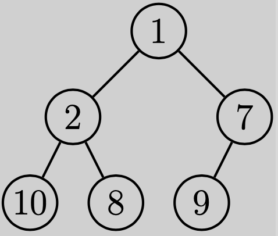Good practices
Looking back at Inspiration café Online Teaching
During the Inspiration Café on 11 June, UU lecturer Tomas Klos (Faculty of Science) talked about his experiences with online education. Due to the corona crisis, all UU education has been taking place online since the middle of block 3. Tomas’ subject (Datastructuren en Algoritmen voor Kunstmatige Intelligentie) started in block 4, which gave him more time to prepare than his colleagues, who suddenly had to make the transition to online education halfway through block 3. Tomas has taken many online courses and webinars to prepare for the start of his first online education. Still, on the first day of his own course he learned more than he had in all those courses.
“I had no idea”

Photo: Fay Klos
Based on the online courses and webinars, Tomas tried to summarize all the do’s and don’ts for himself, and to redesign his course accordingly. He wanted to learn as much as possible about online education: What is possible? What should I do? Looking back, he says “he had no idea” what awaited him.
Online lecture: alienating & confusing
As Tomas had learned in the webinars, he started his first online lecture with an informative slide, where the state of affairs was further explained. He asked all students to switch off their camera and microphone, and to announce questions via chat (in the chat, say you have a question, turn on your camera and ask your question). This has never happened in this way: “Students did ask questions in the chat, but they much prefer to keep their cameras out.”
Tomas says that he hated the first online lecture: “The feeling of who you have in front of you is completely gone, you have no idea whether they understand anything”. He calls the experience “alienating and confusing” because it lacks interaction with the students. As a positive point, he mentions Mentimeter, a tool that you can use to ask students questions during the lecture. This way you keep the students a bit active and involved, “though you miss a lot, because only half of the students present (50% are present) actively answers questions.”
An offline course online ≠ an online course
Tomas says that an assumption many people, including himself had, is that an offline course you give online is an online course. However, doing everything online does not make a course an online course. An online course is really designed to be completely online, and so (most) UU courses are not designed. “Realize that giving an offline course online takes more time, and that the quality is likely to drop.” It is really strange and unnerving to give online lectures at first. As a tip Tomas gives to practice with this, for example with colleagues or student assistants: “As a UU employee you are a kind of ‘superuser’ in Microsoft Teams, and you can create an infinite number of teams, use this!”
What defines your course?
 The most important message that Tomas wants to spread is that you have to think carefully about what defines your course. Is this the way of teaching or are these the learning objectives of your course? A “mistake” that you can easily make when you start with online education is that you start thinking from all the tools you have, rather than from the course content. “Start with the course, not with the tools!”
The most important message that Tomas wants to spread is that you have to think carefully about what defines your course. Is this the way of teaching or are these the learning objectives of your course? A “mistake” that you can easily make when you start with online education is that you start thinking from all the tools you have, rather than from the course content. “Start with the course, not with the tools!”
Finally, don’t be afraid to do things wrong. Students are often very understanding! “When you show that you are making an effort, they appreciate it very much, even if you make mistakes!”
Want to know more?
- Column “Alienation lurks in the virtual classroom” (in Dutch)
- Mentimeter to make interactive presentations/quizzes
- Online training “Online Education” from the UU, especially for UU lecturers and employees
Author: Naomi Smorenburg, student Utrecht University

